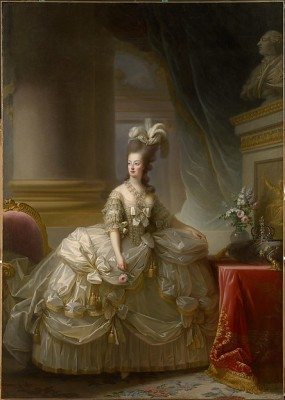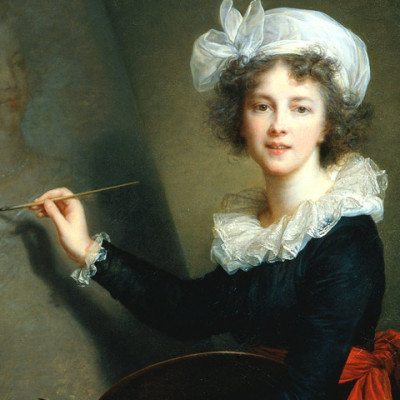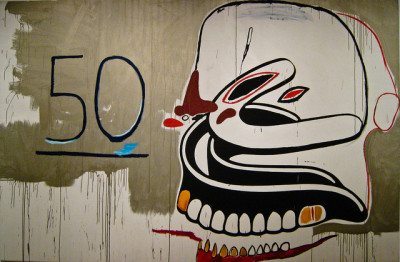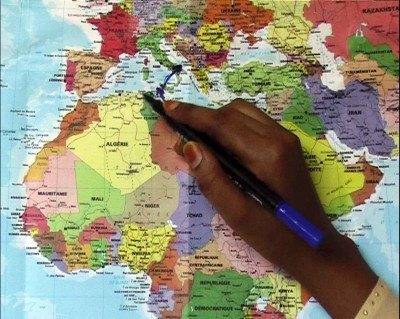Now that we have finally reached the month of April, we are bombarded with rain for the much-anticipated flowers and other beautiful living beings of nature that are reborn with the season. On rainy days, one of the best indoor activities is visiting a museum. Here are a few fascinating exhibits you may want to check out this month on one of your lazy, rainy days off.

1) Vigée Le Brun: Woman Artist in Revolutionary France
Feb. 15 to May 15, 2016
The Metropolitan Museum of Art
1000 5th Ave., New York, NY 10028
212-535-7710
You may want to visit this exhibit soon, since it will only be around for another month, and it will definitely be worth seeing. Women artists, as we all know, are not very common in history. And that is why this exhibit of the great French 18th-century painter Elisabeth Louise Vigée Le Brun’s (1755–1842) work, who is one of the most significant women artists, will be one of a kind. Plus, it is only the second exhibition of her work in the present-day.
What also makes her so exceptional as an artist is that she was self-taught and was extremely talented in painting self-portraits. She became successful during the French Revolution, which was quite a tumultuous time in both France and all of Europe. In 1783, Vigée Le Brun was accepted, at 28 years old, to the Académie Royale de Peinture et de Sculpture, which was a prominent art institute in France. She was only one out of the four women who were accepted into the institute during that time. She had originally been rejected because of her husband’s profession as an art dealer in France, whom she married in 1776. However, with the help of Marie Antoinette, she was accepted to join.


Due to Vigée Le Brun’s relationship with the queen, she escaped from France to Italy in 1789. After living there for only a year, in 1790, she was chosen to be a member of the Accademia di San Luca, Rome, a collaboration of talented artists. Before going back to France, she worked in Florence, Naples, Vienna, St. Petersburg and Berlin, and drew paintings of royals in Naples, Russia and Prussia. There are 80 of her works shown in the exhibit, which contains paintings and some pastel works. Make sure to come see this remarkable exhibit on a phenomenal woman artist who was ahead of her time.
 2) Glamorous Graffiti: Basquiat, Crash, Haring & more
2) Glamorous Graffiti: Basquiat, Crash, Haring & more
March 19 to July 10, 2016
Nassau County Museum of Art
One Museum Dr., Roslyn Harbor, NY 11576
516-484-9337
This exhibit goes hand in hand with the Kenny Scharf exhibit, which is also on display. So, if you like Scharf’s wild and innovative work, then you will probably love this, as it displays his contemporaries who were also part of the New York graffiti and street art movement of the ‘80s. The exhibit shows an array of different techniques of graffiti which are examined through the art of Jean Michel Basquiat, Lee Quiñones, Crash, Futura 2000, Toxic and many more, plus Keith Haring’s 1988 portfolio of five silk-screened prints. It also includes films that have documented early ’80s graffiti and city culture. According to the museum’s website, the artists A-One, Daze, Dondi, Koor, Lady Pink, Noc, Richard Hambleton and Rammellzee appear in films such as Downtown 81 by Edo Bertoglio, Wild Style by Charlie Ahearn and Style Wars by Henry Chalfant and Tony Silver.
 3) Long Island’s Best: Young Artists at The Heckscher Museum 2016
3) Long Island’s Best: Young Artists at The Heckscher Museum 2016
April 9 to May 15, 2016
The Heckscher Museum of Art
2 Prime Ave., Huntington, NY 11743-7702
631-351-3250
Want to see some art from our local, young talented artists? This exhibition features 80 artworks of young artists in grades 9 through 12 from our community. This is now the 20th year of Long Island’s Best. It gives the students the opportunity and challenge to take a piece of art from the museum to inspire and influence them to create their very own piece. The students’ artwork is done on a professional level and there are an array of different styles, subjects and media used.

4) Bouchra Khalili: The Mapping Journey Project
April 9 to Aug. 28, 2016
The Museum of Modern Art
11 W 53rd St., New York, NY 10019
212-708-9400
Shown on different screens throughout the museum’s Donald B. and Catherine C. Marron Atrium will be Bouchra Khalili’s The Mapping Journey Project, which is a collection of videos of the stories of eight different people who have been coerced by economic and political conditions to migrate illegally and whose secluded travels took them through the Mediterranean basin. The project involves showing each individual’s narration of their travels as they outline, with a thick permanent marker, the path they took on their journey on a geopolitical map of the region.
Although their faces are not shown in the video, their voices are heard and hands are shown tracing the map. Doing it almost anonymously in this way allows the rejection of types of depictions that are demanded by the news media, international border control and systems of surveillance, and thus shows an authentic, intricate web of migration.
According to the website, as a cohesive whole, the videos “function as an alternative geopolitical map defined by the precarious lives of stateless people” and that Khalili’s innovative piece tackles the challenge of “developing critical and ethical approaches to questions of citizenship, community and political agency.”


















